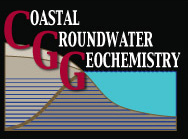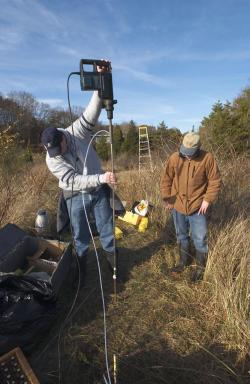Subterranean Estuary Geochemistry
Despite being a major vector for the land-ocean transport of materials, the role of groundwater in oceanic elemental mass balances has been poorly characterized. And where groundwater has been explicitly considered, most studies have not quantified the importance of chemical transformations that occur during the mixing of meteoric water with saline pore water (the “subterranean estuary”) prior to surface water discharge. This proposal will examine the importance of coastal hydrogeology on the flux of trace elements and nutrients from subterranean estuaries (STEs). In order to accurately quantify the impact of STEs on global biogeochemical cycles, we must understand reactions in, and fluxes from, a wide range of coastal geomorphologies. In this work, we propose to address the following key questions:
1. How does coastal hydrogeology influence the fluxes of trace elements into and out of subterranean estuaries?
-we propose a study of four STEs on the basis of their hydrological and geological characteristics: (1) karst (Yucatan Peninsula, Mexico); (2) fractured bedrock (Ubatuba, Brazil); and (3) ocean island (a) volcanic and (b) carbonate platform (Guam). These sites were chosen to span a range of rock type, rainfall, and aquifer residence time.
2. What effect do these fluxes have on the mass balance of trace elements in the global ocean?
-in addition to sampling within the STE, we will use radium isotopes and radon to quantify the flux of trace elements to the coastal ocean. By sampling each of these sites on a seasonal basis, we propose to scale the local fluxes to the global estimates using a coastal typology database.
This research is supported by NSF.



